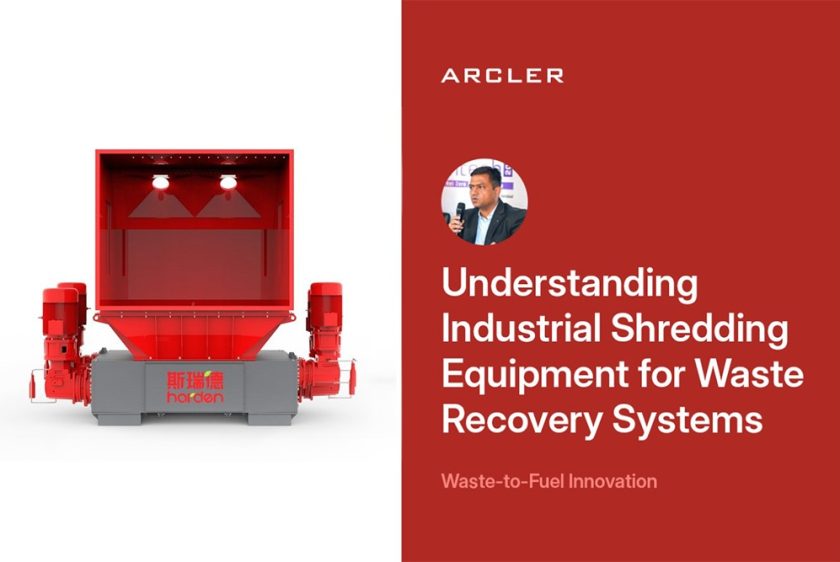
Understanding Industrial Shredding Equipment for Waste Processing Systems
In the waste management and recycling industry, industrial shredding equipment plays a critical role in transforming bulky, difficult-to-handle waste into manageable, uniform materials. Shredding can reduce solid waste volume by 85% to 90%, making transportation, storage, and recycling processes significantly more efficient. Whether it’s plastic, paper, wood, or even scrap metal, a shredder machine is often the first step in a recovery system that supports efficient recycling and circular economy practices.
But shredding technology isn’t “one-size-fits-all.” Different materials and recycling goals require different shredding machines. From a paper shredder machine designed for office use to heavy-duty Primary Hook Shredders that can tackle industrial waste, each machine serves a unique purpose.
In this blog, let’s break down the types of shredders, their working principles, and how they contribute to waste recovery systems.
Why Shredding Matters in Waste Recovery
Shredding is more than just breaking things apart. It provides key benefits for industries like plastic recycling, metal recovery, cement plants (AFR), and municipal waste management:
- Volume Reduction: Cuts down waste size, making transport and storage easier.
- Homogenization: Produces uniform material for further processing (washing, extrusion, or chemical recycling).
- Material Separation: Separates useful and unproductive materials.
- Energy Recovery: Prepares alternative fuels (RDF/SRF) for cement kilns and power plants.
- Process Efficiency: Shredded material feeds more smoothly into downstream equipment like washing lines, separators, or extrusion systems.
Without shredding, waste recovery systems would struggle with efficiency and cost-effectiveness.
Types of Industrial Shredder Machines
Industrial shredders are classified based on the number of shafts, cutting technology, and application. Let’s look at the main types used in the industry.
1. Primary Hook Shredder
The Primary Hook Shredder is designed for bulky, heavy, and industrial-grade waste. Its hook-style cutters grab large pieces and tear them apart with immense force.
- Best For: Municipal solid waste, bulky plastic, wood, tires, and industrial rejects.
- Advantages:
- Handles a variety of materials.
- Prepares waste for secondary shredding or further treatment.
- Low maintenance, robust design.
- Handles a variety of materials.
- Industry Use: Often the first step in cement industry AFR systems or large recycling plants.
2. Single Shaft Shredder
The Single Shaft Shredder uses one rotor with sharp blades and a hydraulic push the material towards the rotor. It produces consistent particle size, making it perfect for plastic recycling.
- Best For: Plastics (rigid & flexible), wood, textiles and MSW.
- Advantages:
- High throughput.
- Produces uniform granules for washing or extrusion.
- Energy efficient.
- High throughput.
- Industry Use: Used in the cement industry where the particle size requirement is very fine (smaller) & needs consistent output size.
3. Two Shaft Shredder
The Two Shaft Shredder has dual rotors working in opposite directions. Instead of fine cutting, it tears waste apart into rough pieces.
- Best For: Metal scrap, e-waste, rubber, bulky industrial waste.
- Advantages:
- Handles tough and contaminated materials.
- Low speed, high torque → prevents blockages.
- Ideal for volume reduction.
- Handles tough and contaminated materials.
- Industry Use: Pre-shredding in scrap yards, RDF preparation, or large-scale recycling plants.
4. Four Shaft Shredder
The Four Shaft Shredder is the most advanced design. With four interlocking shafts, it shreds, recirculates, and refines material to a very precise output size.
- Best For: Confidential waste, electronics, high-value recycling streams.
- Advantages:
- Produces very fine, consistent output.
- Ensures complete destruction of sensitive materials.
- Can process multiple material streams at once.
- Produces very fine, consistent output.
Industry Use: Secure document destruction, electronics recycling, or fine RDF production.
Choosing the Right Shredder: Primary, Single, Two & Four Shaft
| Shredder Type | Best Formaterials | Output Quality | Industry Use |
| Primary Hook Shredder | Bulky MSW, wood, plastics | Coarse shredding | Cement AFR, bulky waste |
| Single Shaft Shredder | Plastics, textiles, e-waste | Uniform granules | Plastic recycling linesCement industry, Waste management companies etc. |
| Two Shaft Shredder | Metal scrap, tires, e-waste | Rough pieces | Scrap yards, RDF prep |
| Four Shaft Shredder | Confidential waste, electronics | Fine, precise | Secure destruction, e-waste |
How Shredding Machines Fit into Waste Recovery Systems
A shredding machine is rarely used in isolation. It’s usually the first stage of an integrated recovery system:
- Shredding – Material is broken down by a Primary Hook, Single Shaft, or Multi-Shaft shredder.
- Separation – Magnetic separators, ballistic separators, or air classifiers separate metals, plastics, and organics.
- Washing & Cleaning – Especially for plastics, washing lines remove dirt, labels, and contaminants.
- Extrusion & Pelletizing – Clean shredded plastics are melted and converted into pellets for reuse.
- Energy Recovery – Non-recyclable fractions become RDF/SRF for cement plants.
This process ensures maximum material recovery, reduced landfill dependency, and better sustainability outcomes.
Shredding: The Bridge Between Waste and Value
Industrial shredders are not just machines that “tear things up.” They are the bridge between waste and value creation. By breaking down complex materials into manageable pieces, they make recycling and recovery possible on a large scale.
Whether it’s a paper shredder machine for office use or a Primary Shredder in an industrial plant, the principle remains the same: turning waste into opportunity.
At Arcler, we understand that every waste stream is different. That’s why choosing the right shredder Primary Hook, Single Shaft, Two Shaft, or Four Shaft is critical for building efficient waste recovery systems that support a circular economy.
Final Thoughts
The demand for efficient waste recovery is only growing, and industrial shredding equipment lies at the heart of it. By reducing, refining, and preparing waste for the next steps in the recycling chain, shredders enable industries to cut costs, recover resources, and meet sustainability targets.
Choosing the right shredder machine is not just about capacity, it’s about aligning technology with waste type, downstream processes, and long-term recovery goals.





